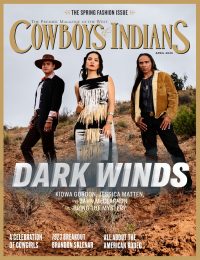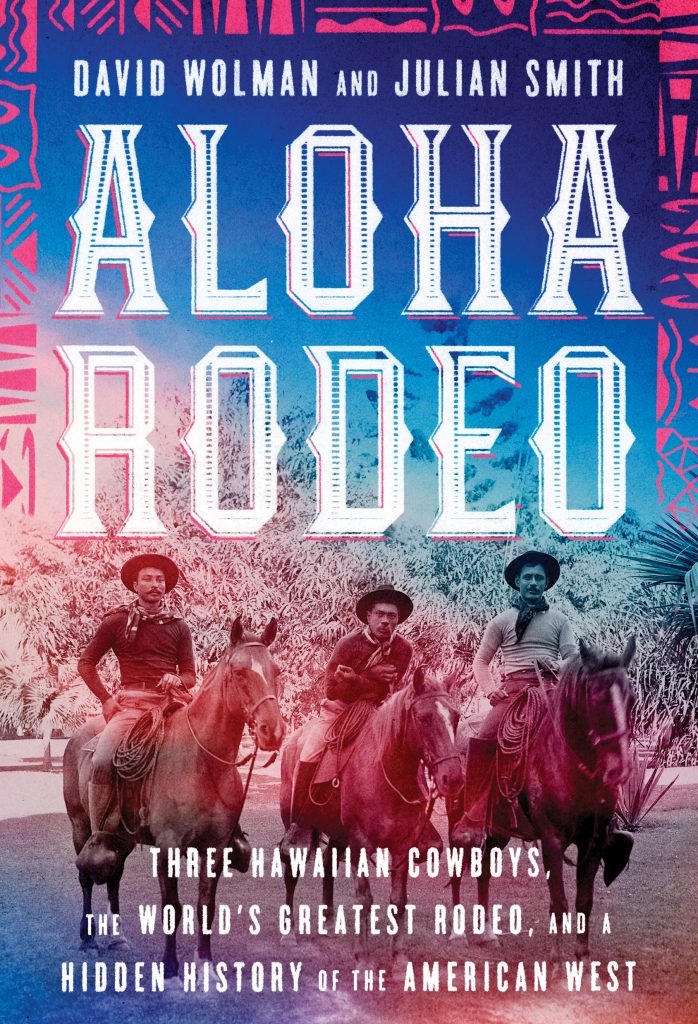Aloha Rodeo — the story of three Hawaiian cowboys who in 1908 competed in the world's greatest rodeo — plus more history, mysteries, and adventure.
Hawaii may not immediately come to mind when one thinks of cowboys, but the island chain’s rich paniolo culture dates back to 1793 and ’94, when Great Britain Royal Navy Capt. George Vancouver brought the dubious gift of cattle to the islanders.
The feral offspring of these original longhorns and other transported cattle adapted to the islands’ jagged lava rock and dense forests, and the imported culture of cowboying likewise adapted to the unique challenges of Hawaii’s terrain and the wildness of the cattle. In August 1908, three Hawaiian vaqueros — Ikua Purdy, Archie Ka‘au‘a, and Jack Low — showed up, flowers adorning their hats, in Cheyenne, Wyoming, to compete at the annual Frontier Days rodeo. David Wolman and Julian Smith tell the trio’s story and that of the “Holy City of the Cow” in Aloha Rodeo (William Morrow, 2019).
Even being familiar with the story before researching the book, Wolman was surprised at how important cattle ranching was to Hawaii, he says in a C&I interview with both authors. One of the largest and oldest privately owned ranches in the world, Parker Ranch, was founded in 1847 and today encompasses some 130,000 acres.
“At the turn of the 20th century, it was something like a third of all acreage in Hawaii was dedicated to rangeland,” Wolman says. “And when you think of how much of that is beaches or inaccessible mountains, that’s really an incredible figure all by itself.”
Perhaps most surprising, Wolman adds, is the role “the humble cow” played in imperialization. The book explains how introducing cattle to Hawaii and elsewhere would necessitate agricultural development that would eventually leave people dependent on trade in places where they previously lived off the land.
“Now that we know this stuff, the gift of cattle, it’s almost like you’re putting air quotes around the word gift,” Wolman says. “Even if it wasn’t malevolent on their part … it proved to be a much more complicated present. They were kind of using the cattle to almost lasso the territory and pull it into the sphere of influence of England and later American politics.”
Smith found it remarkable how diverse the turn-of-the- century West was—culturally, gender-wise, and racially, with estimates that 20 to 30 percent of cowboys were African American. “They could actually get a real job and find a greater sense of equality out West than they could back East after the Civil War,” Smith says. “It was also the start of female cowgirls who were gaining some measure of fame. They were participating in these events, horse racing, even bucking bronco events. Wyoming itself has a real interesting history of equality.”
These fascinating little-known stories from history will surely capture readers’ imaginations. What will capture their hearts is the vivid and deeply researched characterization of the three unlikely stars of the 1908 Frontier Days — along with Jack’s ambitious entrepreneur brother, Eben, who’d lost a hand in a roping accident—who showed Cheyenne how cowboying was done a few thousand miles west.
Inland, by Téa Obreht (Random House). The interwoven, surreal tales of a haunted outlaw who falls in with the U.S. Army Camel Corps and a woman trying to hold together a household in the face of drought and an absent husband.
This Land: How Cowboys, Capitalism, and Corruption are Ruining the American West, by Christopher Ketcham (Viking). A journalist documents how commercial exploitation and governmental wrongdoing have led to destruction and selling out of American public land.
Big Wonderful Thing: A History of Texas, by Stephen Harrigan (University of Texas Press). The A Friend of Mr. Lincoln novelist turns to nonfiction, retelling the history of the most mythologized state in the nation and putting familiar heroes in context alongside previously overlooked women, artists, Native Americans and other minorities, and more.
The Heartbeat of Wounded Knee: Native America From 1890 to the Present, by David Treuer (Riverhead Books). A monumental history book by an Ojibwe scholar and novelist disproves the idea that Native American life ended with the massacre by the U.S. Cavalry of hundreds of Lakota at Wounded Knee Creek, South Dakota, in this 2019 National Book Award finalist (as of press time; winners were announced November 20).
Arrows of Fire, by Marlen Suyapa Bodden (Roatan Hall Press). Moctezoma mulls whether to keep a girl as a concubine or sacrifice her to the god of war as Cortés invades his empire in this historical novel set during the 16th-century conquest of Mexico.
Louis L’Amour’s Lost Treasures: Volume 2, by Louis L’Amour with Beau L’Amour (Bantam). More manuscripts and unfinished stories from the legendary author along with rare photographs and commentary from his son, Beau.
Land of Wolves, by Craig Johnson (Viking). Walt Longmire investigates the possible murder of an itinerant shepherd with ties to a powerful Basque family — and deals with a renegade wolf that townspeople want dead.
Lands of Our Ancestors: Book Three, by Gary Robinson (Tribal Eye Productions). This is the final book in a young readers’ historical multigenerational Chumash family saga set in California’s Mission period, Mexican Rancho era, and Gold Rush/statehood.
More from our entertainment feature
Photography: Image courtesy of The Bishop Museum
From our January 2020 issue.













